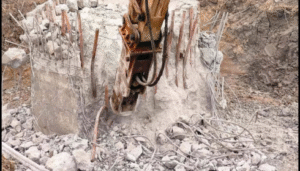1. Zarephath:
Zarephath, mentioned in ancient texts including the Bible, holds significance for its historical and cultural relevance.
2. Biblical References:
In the Bible, Zarephath is associated with the stories of the prophet Elijah and the widow who provided him refuge during a time of drought.
3. Geographical Context:
Zarephath is believed to have been situated along the Mediterranean coast, possibly in the region of modern-day Lebanon.
4. Archaeological Discoveries:
Excavations in the area have revealed remnants of ancient settlements, providing insights into the historical importance of Zarephath.
5. Modern Speculations:
Scholars and historians have debated the exact location of Zarephath, with some theories placing it near the city of Sidon in Lebanon.
6. Cultural Significance:
Zarephath’s mention in various religious texts and its connection to significant figures like Elijah add to its cultural importance.
7. Economic Activities:
Historical records suggest that Zarephath was a coastal town engaged in maritime trade, contributing to its economic prosperity.
8. Influence of Ancient Trade Routes:
Zarephath likely benefited from its strategic location along trade routes connecting the Mediterranean with inland regions.
9. Impact of Historical Events:
Throughout history, Zarephath may have experienced periods of prosperity and decline due to factors such as wars and natural disasters.
10. Modern-Day Exploration:
Archaeologists and historians continue to study Zarephath, utilizing advanced technologies to uncover more about its past.
11. Preservation Efforts:
Efforts are underway to preserve and protect the archaeological sites associated with Zarephath for future generations.
12. Tourism Potential:
Zarephath’s historical significance and intriguing mysteries make it a potential attraction for tourists interested in ancient civilizations.
13. Educational Opportunities:
Studying Zarephath provides valuable insights into ancient Mediterranean cultures and their interactions.
14. Collaboration in Research:
International cooperation among scholars and archaeologists is crucial for advancing our understanding of Zarephath’s history.
15. Community Engagement:
Involving local communities in archaeological projects fosters a sense of ownership and pride in preserving cultural heritage.
16. Challenges in Preservation:
Rapid urbanization and development pose challenges to the preservation of Zarephath’s archaeological sites.
17. Environmental Concerns:
Environmental factors such as coastal erosion and climate change also threaten the integrity of Zarephath’s remains.
18. Interdisciplinary Approaches:
Combining expertise from fields such as archaeology, history, and environmental science is essential for comprehensive research on Zarephath.
19. Public Awareness:
Raising awareness about Zarephath’s historical significance encourages appreciation and support for preservation efforts.
20. Future Prospects:
Continued exploration and study of Zarephath hold the promise of unraveling more mysteries about this ancient city.
21. Collaborative Initiatives:
Partnerships between governments, academic institutions, and cultural organizations can facilitate comprehensive research and conservation projects.
22. Educational Outreach:
Educational programs aimed at schools and communities help instill an appreciation for Zarephath’s rich heritage.
23. Sustainable Development:
Balancing development with preservation is key to ensuring Zarephath’s cultural legacy is safeguarded for future generations.
24. Global Heritage:
Zarephath’s significance extends beyond its geographical location, contributing to the tapestry of global heritage.
25. Conclusion:
While the exact location of Zarephath may remain debated, its legacy endures through ongoing research, preservation efforts, and the fascination it sparks in scholars and visitors alike.













+ There are no comments
Add yours